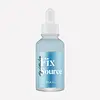What's inside
What's inside
 Key Ingredients
Key Ingredients

 Benefits
Benefits

 Concerns
Concerns

 Ingredients Side-by-side
Ingredients Side-by-side

Water
Skin ConditioningAscorbic Acid 20%
AntioxidantAlcohol
AntimicrobialNiacinamide
SmoothingSodium Lactate
BufferingGlycerin
Humectant1,2-Hexanediol
Skin ConditioningGlucose
HumectantButylene Glycol
HumectantPEG-60 Hydrogenated Castor Oil
EmulsifyingSodium Hyaluronate
HumectantHydroxyacetophenone
AntioxidantXanthan Gum
EmulsifyingDiethoxyethyl Succinate
SolventGlutathione
Cyanocobalamin
Skin ConditioningCitrus Aurantium Dulcis Peel Oil
MaskingPanthenol
Skin ConditioningLactobacillus/Scutellaria Baicalensis Root Extract Ferment Filtrate
AntioxidantCamellia Sinensis Leaf Extract
AntimicrobialBeta-Glucan
Skin ConditioningWater, Ascorbic Acid 20%, Alcohol, Niacinamide, Sodium Lactate, Glycerin, 1,2-Hexanediol, Glucose, Butylene Glycol, PEG-60 Hydrogenated Castor Oil, Sodium Hyaluronate, Hydroxyacetophenone, Xanthan Gum, Diethoxyethyl Succinate, Glutathione, Cyanocobalamin, Citrus Aurantium Dulcis Peel Oil, Panthenol, Lactobacillus/Scutellaria Baicalensis Root Extract Ferment Filtrate, Camellia Sinensis Leaf Extract, Beta-Glucan
Water
Skin ConditioningAlcohol
AntimicrobialButylene Glycol
HumectantGlycerin
Humectant1,2-Hexanediol
Skin ConditioningDiethoxyethyl Succinate
SolventCentella Asiatica Leaf Water
Skin ConditioningCastanea Sativa Shell Extract
Skin ConditioningGardenia Florida Fruit Extract
Skin ConditioningAsiaticoside
AntioxidantAsiatic Acid
Skin ConditioningMadecassic Acid
Skin ConditioningHydrolyzed Conalbumin
Skin ConditioningPEG-60 Hydrogenated Castor Oil
EmulsifyingBis-PEG-18 Methyl Ether Dimethyl Silane
EmollientPolyvinyl Alcohol
Xanthan Gum
EmulsifyingAmmonium Acryloyldimethyltaurate/Vp Copolymer
Acrylates/C10-30 Alkyl Acrylate Crosspolymer
Emulsion StabilisingArginine
MaskingLactic Acid
BufferingSodium Stearoyl Glutamate
CleansingDextrin
AbsorbentAcrylates Copolymer
T-Butyl Alcohol
PerfumingVp/Polycarbamyl Polyglycol Ester
Hydrolyzed Sesame Protein Pg-Propyl Methylsilanediol
Skin ConditioningAdenosine
Skin ConditioningBenzyl Glycol
SolventEthylhexylglycerin
Skin ConditioningRaspberry Ketone
MaskingHydroxyacetophenone
AntioxidantParfum
MaskingWater, Alcohol, Butylene Glycol, Glycerin, 1,2-Hexanediol, Diethoxyethyl Succinate, Centella Asiatica Leaf Water, Castanea Sativa Shell Extract, Gardenia Florida Fruit Extract, Asiaticoside, Asiatic Acid, Madecassic Acid, Hydrolyzed Conalbumin, PEG-60 Hydrogenated Castor Oil, Bis-PEG-18 Methyl Ether Dimethyl Silane, Polyvinyl Alcohol, Xanthan Gum, Ammonium Acryloyldimethyltaurate/Vp Copolymer, Acrylates/C10-30 Alkyl Acrylate Crosspolymer, Arginine, Lactic Acid, Sodium Stearoyl Glutamate, Dextrin, Acrylates Copolymer, T-Butyl Alcohol, Vp/Polycarbamyl Polyglycol Ester, Hydrolyzed Sesame Protein Pg-Propyl Methylsilanediol, Adenosine, Benzyl Glycol, Ethylhexylglycerin, Raspberry Ketone, Hydroxyacetophenone, Parfum
 Reviews
Reviews

Ingredients Explained
These ingredients are found in both products.
Ingredients higher up in an ingredient list are typically present in a larger amount.
1,2-Hexanediol is a synthetic liquid and another multi-functional powerhouse.
It is a:
- Humectant, drawing moisture into the skin
- Emollient, helping to soften skin
- Solvent, dispersing and stabilizing formulas
- Preservative booster, enhancing the antimicrobial activity of other preservatives
Alcohol comes in many different forms. Different types of alcohol will have different effects on skin. This ingredient is usually an astringent alcohol.
These alcohols are drying on the skin. They may strip away your skin's natural oils and even damage your skin barrier. Astringent alcohols may also irritate skin.
Other types of astringent alcohols include:
According to the National Rosacea Society based in the US, you should be mindful of products with these alcohols in the top half of ingredients.
Any type of sanitizing product will have high amounts of alcohol to help kill bacteria and viruses.
Fatty alcohols come from plant oils such as coconut oil. These can help hydrate the skin and are non-irritating. Some fatty alcohols include cetyl and stearyl alcohol.
Learn more about AlcoholButylene Glycol (or BG) is used within cosmetic products for a few different reasons:
Overall, Butylene Glycol is a safe and well-rounded ingredient that works well with other ingredients.
Though this ingredient works well with most skin types, some people with sensitive skin may experience a reaction such as allergic rashes, closed comedones, or itchiness.
Learn more about Butylene GlycolWe don't have a description for Diethoxyethyl Succinate yet.
Glycerin is already naturally found in your skin. It helps moisturize and protect your skin.
A study from 2016 found glycerin to be more effective as a humectant than AHAs and hyaluronic acid.
As a humectant, it helps the skin stay hydrated by pulling moisture to your skin. The low molecular weight of glycerin allows it to pull moisture into the deeper layers of your skin.
Hydrated skin improves your skin barrier; Your skin barrier helps protect against irritants and bacteria.
Glycerin has also been found to have antimicrobial and antiviral properties. Due to these properties, glycerin is often used in wound and burn treatments.
In cosmetics, glycerin is usually derived from plants such as soybean or palm. However, it can also be sourced from animals, such as tallow or animal fat.
This ingredient is organic, colorless, odorless, and non-toxic.
Glycerin is the name for this ingredient in American English. British English uses Glycerol/Glycerine.
Learn more about GlycerinHydroxyacetophenone is antioxidant with skin conditioning and soothing properties. It also boosts the efficiency of preservatives.
This ingredient is not irritating or sensitizing.
Peg-60 Hydrogenated Castor Oil comes from hydrogenated castor oil. It is a solubilizer and emulsifier.
As a solubilizer, it helps dissolve ingredients into a water-based version. It is also an emulsifer. Emulsifier help prevent oils and water from separating. Both these properties help create evenly-spread and uniform products.
Basically, Peg-60 Hydrogenated Castor Oil helps hold ingredients together.
Learn more about PEG-60 Hydrogenated Castor OilWater. It's the most common cosmetic ingredient of all. You'll usually see it at the top of ingredient lists, meaning that it makes up the largest part of the product.
So why is it so popular? Water most often acts as a solvent - this means that it helps dissolve other ingredients into the formulation.
You'll also recognize water as that liquid we all need to stay alive. If you see this, drink a glass of water. Stay hydrated!
Learn more about WaterXanthan gum is used as a stabilizer and thickener within cosmetic products. It helps give products a sticky, thick feeling - preventing them from being too runny.
On the technical side of things, xanthan gum is a polysaccharide - a combination consisting of multiple sugar molecules bonded together.
Xanthan gum is a pretty common and great ingredient. It is a natural, non-toxic, non-irritating ingredient that is also commonly used in food products.
Learn more about Xanthan Gum